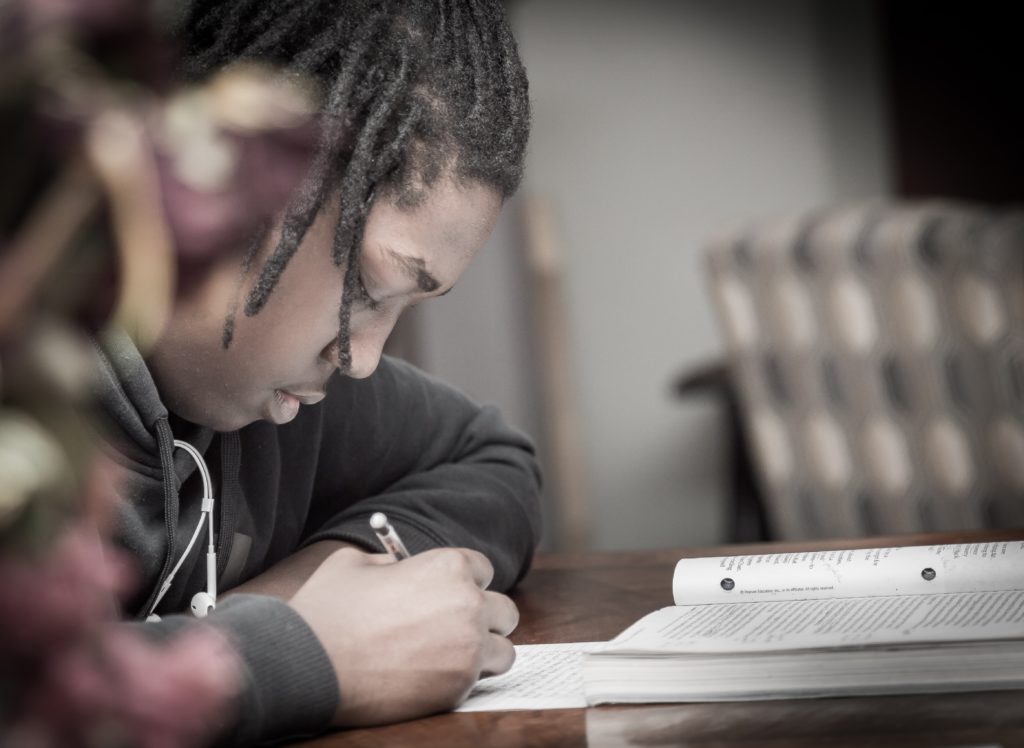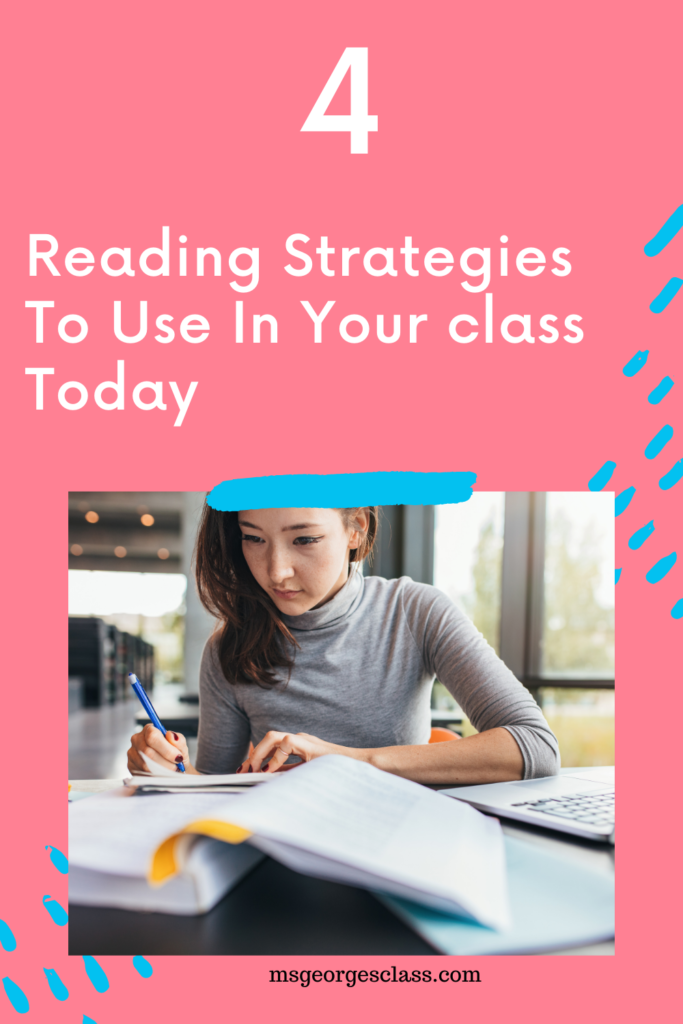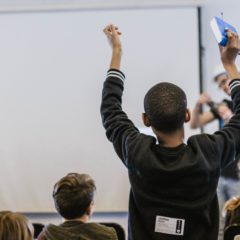
I think I found the liquid gold for English Language Arts and reading teachers. Determining the theme and how it develops is an ELA standard that begins at the elementary level, but it becomes more challenging as the text becomes harder to read. This year, I am teaching seniors ELA, and they scored low on a district’s standardized test. During my research for this blog, I read the book Building Reading Comprehension Habits in Grades 6-12: A Toolkit of Classroom Activities by Jeff Zwiers, and I learned so many strategies that I wanted to teach my students. Zwiers listed six reading comprehension habits: organizing text by sculpting the main idea and summarizing, connecting to background, knowledge, making inferences and predictions, generating and answering questions, understanding and remembering word meanings, and monitoring one’s own comprehension. As good readers, we do things automatically; we read the text, question the text, and take notes. I learned that I do some of my reading behaviors without thinking, but I had a hard time explaining what or how I was apply reading habits. Then I read the book and I learned how to teach my students strategies to improve their reading comprehension.
How Do You Help Your Struggling Readers?
Your struggling readers need help and they need it fast. I taught my reading lab class one strategy, and by the end of the class, their scores on the computer program MindPlay improved. Teachers need to unlock the secrets of their reading habits. I thought writing an outline was my secret to studying and learning information. However, I was also performing strategies that I was not aware of while reading texts. These reading habits may take time, but they are well worth it.

Organizing Text Information by Sculpting the Main Idea
According to Zwiers, “Getting the main idea is the most vital type of thinking we can do to comprehend a text” (28). When students can understand, comprehend, and determine the theme of a text, they can be successful on standardized tests. A good reader organizes essentials, learns to summarize, and questions the text. How many of you ask why the author wrote an article or short story? I do, and that is the first step of understanding the theme. It gets our thoughts ready to seek information that is important and ask why it is important. You may not even think of these questions while you are reading. We do it automatically. If we can get our students to question the text, we can help them comprehend the text better. I created a slideshow that directs students to “sculpt the main idea.” Students answer these questions to determine the central idea or theme of the text.
1.Topic (What?) In informational texts, the topic can be found in the title of the passage.
2. Description (What About It?) What does this specific text say about the topic?
3.Text Purpose(s) (Why?) Why did the author write the text? Why did the teacher assign this text? What will I get out of this?
I taught this through a slideshow and the text “Susan B. Address.” During the introduction, I had students placing three fingers up to remember the strategy and I had the questions posted on each slide. I had six slides and divided the class into six groups. I witnessed every group improving their score with this reading comprehension strategy. I will keep using it because it is such a great strategy.
Connecting to Background Knowledge
Connecting to background knowledge is also known as text to self. As good readers, we learn to relate or connect to the text. When we write, we make emotional appeals or pathos, ethos, or logos to attract readers. An anticipation guide assists students in making predictions (another comprehension tool). Outlines, K-W-L charts, and semantic charts encourage connecting to background knowledge. I used these strategies and witnessed positive results; however, I saw the greatest results with sculpting the main ideas.

Making Inferences and Predictions
Another area that I witnessed students struggling in is making inferences. It takes a strategy to understand inference. Inferencing is making a conclusion after you read because of known facts. I usually tell students it is reading between the lines. However, there is a strategy to excel in this area. “Use the text clues and our background knowledge to predict what will happen next in a story,” (81). You can use the text-to-text and text-to-self/ world inferences. Text-to-text is connecting the current text to an earlier text. Students compare the two structures and make a prediction. Text-to-self is using your own experiences to make a connection with the new text. Guide students to think:
“Who is doing the action? Why?
How does a part fit into the overall text?
What are the effects of an event, both psychological and physical?” (82)
Generating and Answering Questions
During my slideshow, I created a slide to help students develop questions before, during, and after they read a text. This strategy can be used as students are taking tests. Performing think-alouds for your students will help them learn how good readers question the text. “Good questions ask about connections between two parts of the same text,” (97) text-to-self and text-to-text. Students need to think about surface, inference, and text-to-self level questions. These questions can assist readers to understand the text and make connections to it.
Some questions the text suggests are:
Before Reading
-Why am I reading this text?
-What will this text be about?
During Reading
-Is this text making sense?
-Did I miss anything?
After Reading
-So what?
-How could I communicate what I read to someone else?

Strategies that You Can Use Immediately
There are many strategies that you can use immediately to improve comprehension skills. I used the first strategy, sculpting the main idea, and by the end of class, I witnessed my students achieve higher scores on the article quizzes. Think-Alouds demonstrate the thought process of good readers and yield positive results. Make a poster of questions that you use before, during, and after reading. Outlining helps students organize their thoughts and see the writer’s thought process through a visual means. Use the main idea formula. This involves: the topic +what is said about the topic+ purpose=main idea. Recite and post this formula so that students can remember this during the reading process. Semantic webs and anticipation guides will ignite students’ interest in the topic. There are countless strategies that you can use today and help improve your student’s ability to cite evidence and determine the theme.
Reading the Building Reading Comprehension Habits in Grades 6-12 by Jeff Zwiers is a great book to have in your teaching profession library. I had the skills of being a good reader, but I could not explain what I was doing. Zwiers explained what I was doing while I was reading, and I said, “You’re right. I do question the text, and I ask what am I supposed to learn. I have used an outline since middle school.” Now I understand the skill I am doing. The strategies I used I wanted to share with my students. Since I learned these strategies, I have been using them on a daily basis. When I discuss the students determining the theme, I put up three fingers, and I remind them of the “sculpting main idea” strategy. My end goal is to have the students remember the comprehension strategies on tests and throughout life.
What strategies do you use? How do you teach comprehension skills? Write in the comment section.
Work Cited
Zwiers, Jeff. Building Reading Comprehension Habits in Grades 6-12: A Toolkit of Classroom Activities. Newark, Del: International Reading Association, 2004. Print.




Leave a Reply